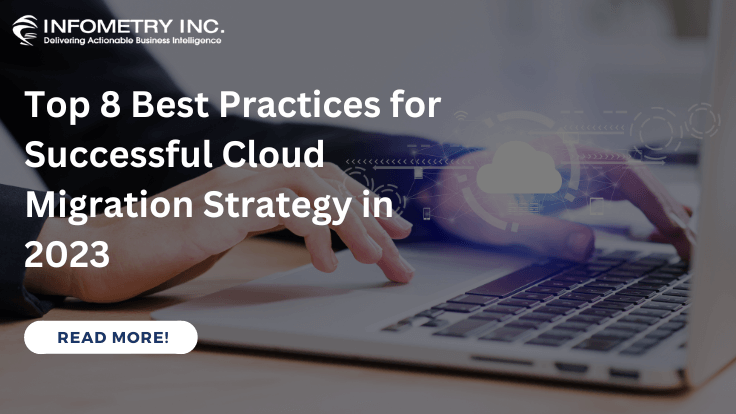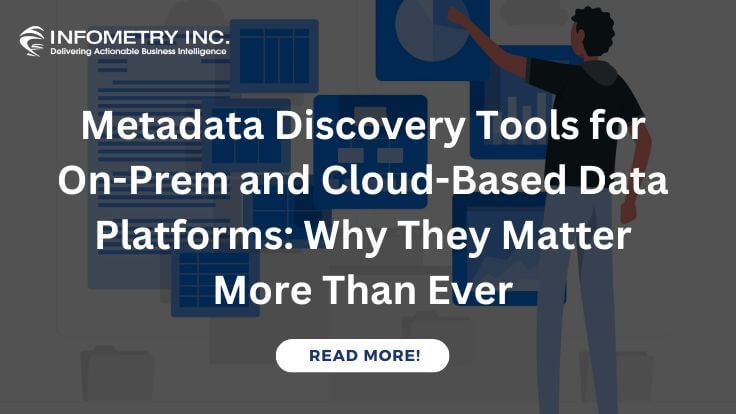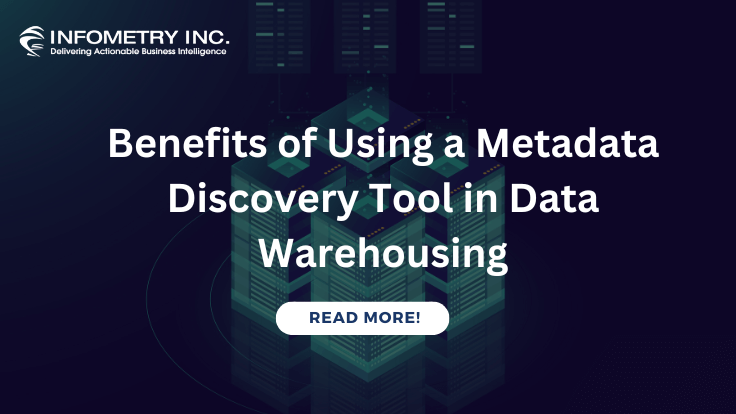
Top 8 Best Practices for Successful Cloud Migration Strategy in 2023
March 27, 2023
The Ultimate Guide to Sales & Marketing Analytics 2023 Trends
April 6, 2023The move from on-premises to the cloud is a complete cycle that requires a lot of planning. The steps involved with cloud data migration are usually very similar, while the process relies upon the association’s size and current innovation landscape. To begin a cloud migration project, you should expect any difficulties ahead of time, set clear timelines, define your business goals, and figure out what assets or Cloud Migration Tools you want for the project.
In this article, we’ll try to set you on the right way to migrating your workloads, applications and processes to the cloud. You’ll learn the basics about moving workloads to the cloud and how to still get value out of your legacy investments. We’ll likewise tell you the best way to get help when you want it. Eventually, you’ll be one step closer to transforming your business.
What is Cloud Migration?
Cloud migration refers to moving data, applications, and other business operations from an on-premises infrastructure or legacy system to a cloud-based environment. This typically involves transferring data and applications from local servers or data centers to remote cloud-based servers that third-party cloud providers manage.
The goal of cloud migration is to take advantage of the scalability, flexibility, and cost-effectiveness of cloud computing. By moving to the cloud, organizations can reduce their IT infrastructure costs, improve the accessibility and availability of their systems and data, and benefit from the ability to scale their computing resources quickly and easily up or down as needed.
Cloud migration may involve various strategies, ranging from a “lift and shift” approach that moves existing applications to the cloud with minimal changes to a complete re-architecting of applications to take advantage of cloud-native capabilities. It may also involve a hybrid approach that combines on-premises and cloud-based resources to create a more flexible and scalable infrastructure.
Step-by-Step Cloud Migration Process
Define your migration goals and objectives
Identify the reasons for migrating to the cloud and define the desired outcomes. This will help you determine the scope of the migration, the resources you will need, and the timeline for the migration.
Analyze your current Infrastructure and Applications
Assess your IT environment to determine which applications, data, and systems are suitable for migrating to the cloud. Consider factors such as security requirements, compliance regulations, and technical dependencies.
Choose the right cloud provider and services
Evaluate different cloud providers and choose the one that best meets your requirements. Consider factors such as cost, performance, security, and scalability.
Design your cloud architecture
Plan the design of your cloud environment and the migration strategy. Define the types of cloud services you will use, such as Platform as a Service (PaaS), Infrastructure as a Service (IaaS), or Software as a Service (SaaS).
Prepare your data and applications for migration
By ensuring they are compatible with the cloud environment. This may involve re-architecting applications to take advantage of cloud-native features.
Move your applications and data to the cloud
Perform the migration of your data and applications to the cloud. This can be done in phases, starting with non-critical applications and data before moving to more critical systems.
Test your cloud environment
Verify that your applications and systems function correctly in the new cloud environment: test performance, scalability, and security to ensure that they meet your requirements.
Monitor and optimize your cloud environment
Continuously monitor and optimize it to meet your needs. This may involve adjusting your resources, optimizing performance, and addressing security vulnerabilities.
Train your staff
Train your staff on how to use and manage the new cloud environment. This will ensure they can effectively utilize the new system and maximize its benefits.
By following these steps, you can successfully migrate your applications and data to the cloud while minimizing downtime, reducing risk, and maximizing the benefits of cloud computing.
Benefits of Cloud Migration
Cost savings
Moving to the cloud eliminates the need for companies to purchase and maintain expensive on-premises hardware and software. Instead, they pay for cloud resources on a pay-as-you-go basis, which can significantly reduce IT costs.
Scalability and flexibility
Cloud environments are highly scalable, meaning businesses can easily add or remove resources as needed. This allows them to respond to changes quickly and easily in demand and scale their IT infrastructure up or down as required.
Improved performance and availability
Cloud providers typically offer high reliability and uptime, meaning businesses can expect improved performance and availability for their applications and systems.
Increased security
Cloud providers typically have robust security measures to protect their customers’ data and systems. By moving to the cloud, businesses can benefit from these security measures and reduce the risk of cyber-attacks and data breaches.
Access to new technologies
Cloud providers often offer access to cutting-edge technologies that businesses may not have the resources to implement independently. By moving to the cloud, companies can use these technologies and gain a competitive edge.
Improved collaboration and productivity
Cloud-based tools and applications make it easy for teams to collaborate and work together, regardless of location. This can improve productivity and help businesses operate more efficiently.
Challenges of Migrating Your Data to the Cloud
While cloud migration can bring significant benefits, there are also several challenges that businesses may face during the process.
Challenges of Cloud Migration Same as the Benefits
Data security
Security is a significant concern regarding cloud migration, as businesses need to ensure that their sensitive data is protected during and after the migration. This may involve implementing new security measures like encryption and access controls.
Technical compatibility
Migrating to the cloud may require updating or re-architecting applications to ensure they are compatible with the cloud environment. This can be a complex process that requires significant time and resources.
Resource allocation
Moving to the cloud requires businesses to allocate resources, such as servers and storage, in a way that maximizes efficiency and cost-effectiveness. This can be challenging, especially if the company is new to the cloud.
Migration downtime
Migrating to the cloud may require taking systems offline, which can result in downtime for the business. This can be particularly challenging for companies that operate 24/7 or have customers in different time zones.
Cost management
While moving to the cloud can be cost-effective in the long run, there may be upfront costs associated with migration, such as licensing fees, data transfer fees, and training costs. Businesses need to manage these costs effectively to ensure a successful migration.
Organizational change
Moving to the cloud can require significant organizational change, as teams may need to adapt to new tools and processes. This can be challenging and require training and support to ensure a successful transition.
Why Migrate to the Cloud with Infometry?
As you take steps on your cloud migration journey, collaborate with specialists who can make effective migrations across different businesses and geologies. With over 13 years of cloud expertise, Infometry can help you migrate and change your IT operations and further enhance your business processes.




